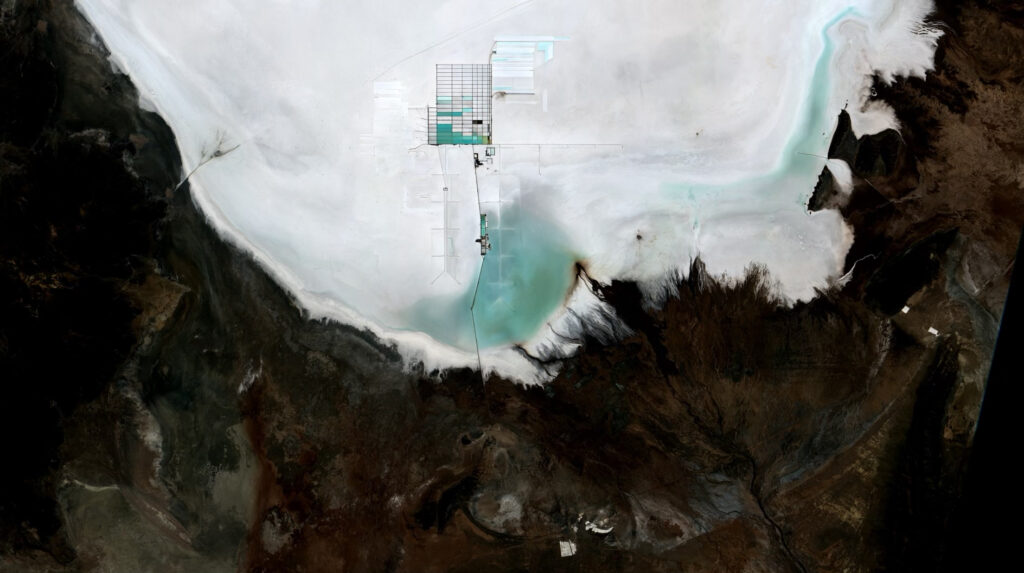
The future of lithium and electric vehicles in California: A Q&A with Oscar Neyra-Nazarrett
Oscar Neyra-Nazarrett on EVs and his company’s approach to reduce the environmental impact of lithium mining.
By 2035, all new vehicles sold in California will be zero-emission vehicles — as required by a 2020 executive order by Governor Gavin Newsom.
That might sound tough to achieve, but incentives help. State and national clean vehicle rebates already offer up to $7,500 to go electric.
Policymakers could go even further, as other states have. In Oregon, a Tesla Model 3 costs less than $30,000 after rebates and incentives.
But a major problem looms: a shortage of lithium that is needed for the vehicles’ batteries. As drivers switch to electric, demand for lithium is projected to increase tenfold over the next few decades. And if mining methods don’t improve, pollution and waste they generate could detract from emissions savings while causing other environmental harms. One study found that manufacturing a 1,100 pound lithium battery could emit up to 74% more carbon dioxide than production of a conventional car.
Oscar Neyra-Nazarrett is a candidate in the Environmental Science and Engineering (D.Env.) doctoral program at UCLA Institute of the Environment and Sustainability. The multidisciplinary program, which turns 50 this fall, includes education from 12 different academic departments and a year of real-world practice with a company, nonprofit or government agency. Working with atmospheric scientist Pablo Saide, Neyra-Nazarrett focuses on remote sensing and multi-satellite analysis.
In December 2021, Neyra-Nazarrett co-founded Lisus, a company that aims to make lithium mining more sustainable.
What is your invention and how does it work?

NEYRA-NAZARRETT: I co-invented the “satellite lithium detection system,” remote-sensing software that identifies lithium deposits to help mining companies mine less, producing less waste. We are basically looking for brines (deposits of salty water) using evapotranspiration measurements. In other words, we see how the soil “sweats” in order to detect the areas where brines are. By finding out where the soil sweats the most, we have a higher chance of finding lithium. No one has been able to accurately prospect lithium locations using satellites. With Lisus, we hope to get a breakthrough.
What role does Lisus play in the electric vehicle industry?
Because most lithium is outsourced from foreign countries like Australia, Chile, China and Argentina, Lisus aims to become a crucial domestic supplier for California and America. Currently we are doing projects around “Lithium Valley,” which is a nickname for Imperial Valley in southeast California. Experts believe there is enough lithium there to power all the electric vehicles in America. We are also working with a mining company in Nevada and looking at opportunities around Salton Sea.
I believe that with the development of more efficient lithium mining technology, we can expand our strategies and resources to become a major lithium supplier capable of helping America make the full transition to electric vehicles.
How does Lisus improve sustainability in lithium mining?
In conventional lithium mining, geologists pump salt-rich waters out of ponds and add hydrated lime to get rid of unwanted minerals. After a few months, you’re left with a brine containing, hopefully, a large concentration of lithium. Unfortunately, this process harms the soil and pollutes both air and water, which negatively affects communities who live nearby. In fact, it’s estimated that 2.2 million liters (581,000 gallons) of water are required to produce one ton of lithium.
Lisus minimizes and streamlines the mining process by locating more precise lithium locations so that miners can reduce the size of the land areas where they mine. The current goal for Lisus is to increase efficiency by 10%.
What is the biggest problem facing the electric vehicle industry and how should we address it?
Greenwashing.
EV companies spend all this time and money marketing themselves as environmentally friendly, but are unintentionally producing more waste in the lithium extraction process. Most people don’t understand complex sustainability issues or the fact that true sustainability is being able to account for all the variables involved in reducing environmental pollution.
To solve this issue, I think we need more education. In schools we need to teach systems thinking, which is a more holistic way to see the interrelations in how the environment works. The first part of systems thinking is going from linear models of the environment to circular models that account for different impacts at every step of an operation. For electric vehicles, that means considering where each material comes from, how it was produced, how much water was used, how much land was used, and what the environmental impact is. We also need more comprehensive media awareness.
What do you think about mass transit as a path towards sustainability? Will personal vehicles become a thing of the past for many people?
That should be the way to go, to be honest. Unfortunately, cities in North America were not planned for pedestrians. If we want to solve the problem, we need to plan for the next 100 years, not the next 5, 10 or 15. I hope personal vehicles become a thing of the past, but while they’re here we need to figure out ways to reduce their environmental impact and the unintended consequences of their production. And we need to act fast.




